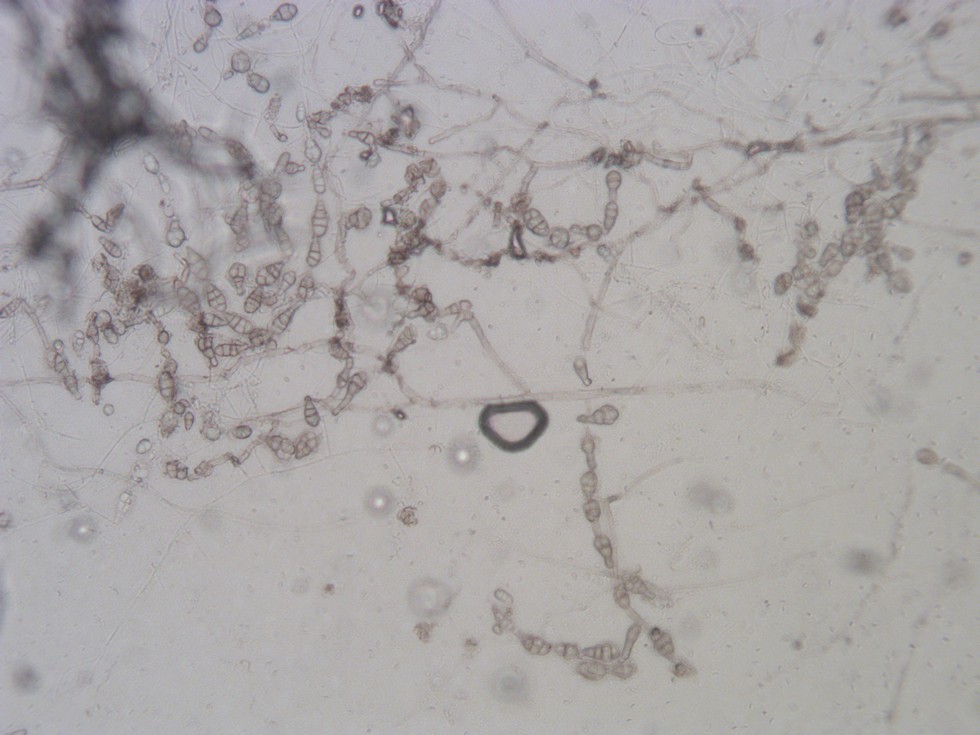| |
|
Entry Date
|
Nick Name
|
Location
|
|
Saturday, September 10, 2022
|

|
Matt D.
|
Connecticut
|
 |
Entry 70 of 71 |
 |
|
|
|
Melanized, multicellular spores with alternating septation are typical of Alternaria solani and related species
In addition to the fusarium that was identified there was also some Alternaria found on the samples. However, this is more likely a secondary infection and not the primanry issue.
Looking back at the full sequence of events, what took the plant down was a combination of things...
First the hydrogen peroxide treatment early in the season was a success as the area that had the issue was further down the plant and may have just been an area that was missed on the initial drench. This stresses the importance of complete coverage when performing a soil drench. The reason why this idea is considered is the older portions of the plant did not have any internal rot, only the one section of newer growth that was likely the original hot spot of the initial fusarium bloom.
Fusarium was the likely main cause of the wilting of the plant. (The above identified Alternaria is a likely secondary infection.) This lead to the need to attempt to take corrective action and as a grower the evaluation of risk and reward is always a gamble. The decision to spray for control of the disease was poorly timed with a heatwave, but this was the decision made. In the end, there was spray damage, which as a result made an initial problem worse.
The likely spray damage in addition to the active disease in combination with a heat wave, did shut the pumpkin growth down. This resulted in an early harvest and did allow for the grass seed cover crop to be established early.
There is something to learn every year and this year was no different. Hopefully, you have enjoyed the season and the science backed approach to this diary.
|
|
|



